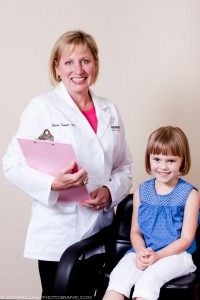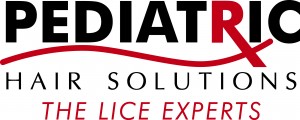By Sheila Fassler, RN – Owner of Pediatric Hair Solutions
Every spring as I begin to plan our summer vacation I am reminded of the summer of 2010….and the worst family vacation ever.
More than 50 siblings, nieces, nephews and grandchildren gathered at Grandma’s lake cottage in Ohio. It started out picture perfect….but ended in sheer hysteria. The culprit? Head lice.
As the only nurse in the crowd, the insanity that ensued after discovering head lice on my lovely nieces and nephews became my problem to solve. After several years volunteering as a school nurse I thought I knew how stressful a diagnosis of head lice could be. The truth is, I had no idea until it hit my own family that summer.
The experience not only taught me that a group of intelligent, reasonable people could simultaneously come unglued because of a tiny bug. I also learned there’s a great deal of misinformation and myths floating around.
After a significant amount of research and 6 years treating thousands of families with head lice, here are scientifically accurate answers to the most commonly asked questions about head lice.
How do people get head lice?
Lice are almost always spread through direct, head to head contact. Less commonly, they can be spread by sharing brushes, combs, hats, scarves and hoodies. Only adult bugs can spread from one head to the other. Eggs cannot be transmitted.
Can lice live in my home?
No, head lice are human parasites that cannot live off the human head for more than 24-48 hours.
How can I tell if my child has lice?
You may be able to see lice or nits (eggs) by parting your child’s hair into small sections. They will most commonly be found behind the ears and near the neckline. Finding an adult bug can be difficult because they move fast. Adults lay 5-10 eggs a day and they can be found within ¼ inch of the scalp, on the hair shaft.
The nits are small, teardrop-shaped eggs that show up differently depending on hair color. The darker your hair, the lighter the nits will appear. The lighter your hair, the more closely they will blend in.
Nits are essentially ‘glued’ to the hair shaft and will not move without being pulled with some force with your fingernail. If you pull it off and lay it on a white paper towel, it will have a brownish tint to it.
Parents often confuse dandruff and lice eggs. Dandruff will not be stuck to the hair and will move if you brush it with your finger or blow on it lightly.
Can my dog get lice?
No. Head lice cannot live on animals of any kind. They are human parasites.
How can I prevent my children from getting head lice?
The best way to prevent head lice is for your child to avoid head to head contact during play, sleepovers or other activities at home and school (including selfies!).
For girls, wearing hair in tight buns and braids is helpful. Spritzing hair with a preventive spray scented with mint each morning is also a good deterrent.
I also recommend mom and dads designate one night a week after bath time to do head checks. This helps identify a case of lice early on and prevent it from spreading further.
Do lice shampoos get rid of lice?
Lice shampoos are no longer effective at killing lice. Research shows 98% of lice have mutated over the years to become resistant to the most commonly used over-the-counter lice treatments. Shampoos also have no effect on lice eggs. Each one must be manually removed.
What is the best way to get rid of head lice?
The most effective head lice treatment involves physically killing lice and eggs with methods such as dehydration. Combing can also work provided you use a toxin-free solution to first suffocate the live lice and then comb out every single egg/nit. Repeat the process 3 times over the course of two weeks. Head lice cannot become resistant to a non-toxic approach and it’s much safer for your little ones!
So as you prepare for your own summer vacation this year, I hope it’s one that is filled with fun, not lice. If you are unlucky enough to encounter the pest, treat it right the first time now that you’re armed with the facts.
About the Author:
Sheila Fassler, RN, worked as an Intensive Care Unit nurse and a volunteer school nurse at her children’s elementary school. She founded and owns Pediatric Hair Solutions, the only licensed health care facility dedicated to the treatment of head lice, located in South Charlotte, Lake Norman and 6 other locations in the Carolinas. Sheila was born and raised in Youngstown, Ohio. She attended the Akron University College of Nursing. After marrying her husband, the two moved to the Carolinas to start a family. The couple’s two children both attend the University of South Carolina.
You can find Pediatric Hair Solutions at:
Pediatric Hair Solutions – Charlotte
6923 Shannon Willow Rd, Suite 100
Charlotte, NC 28226
(P)704-909-9414
facebook: www.facebook.com/PHSCharlotte
twitter: twitter.com/phscharlotte





